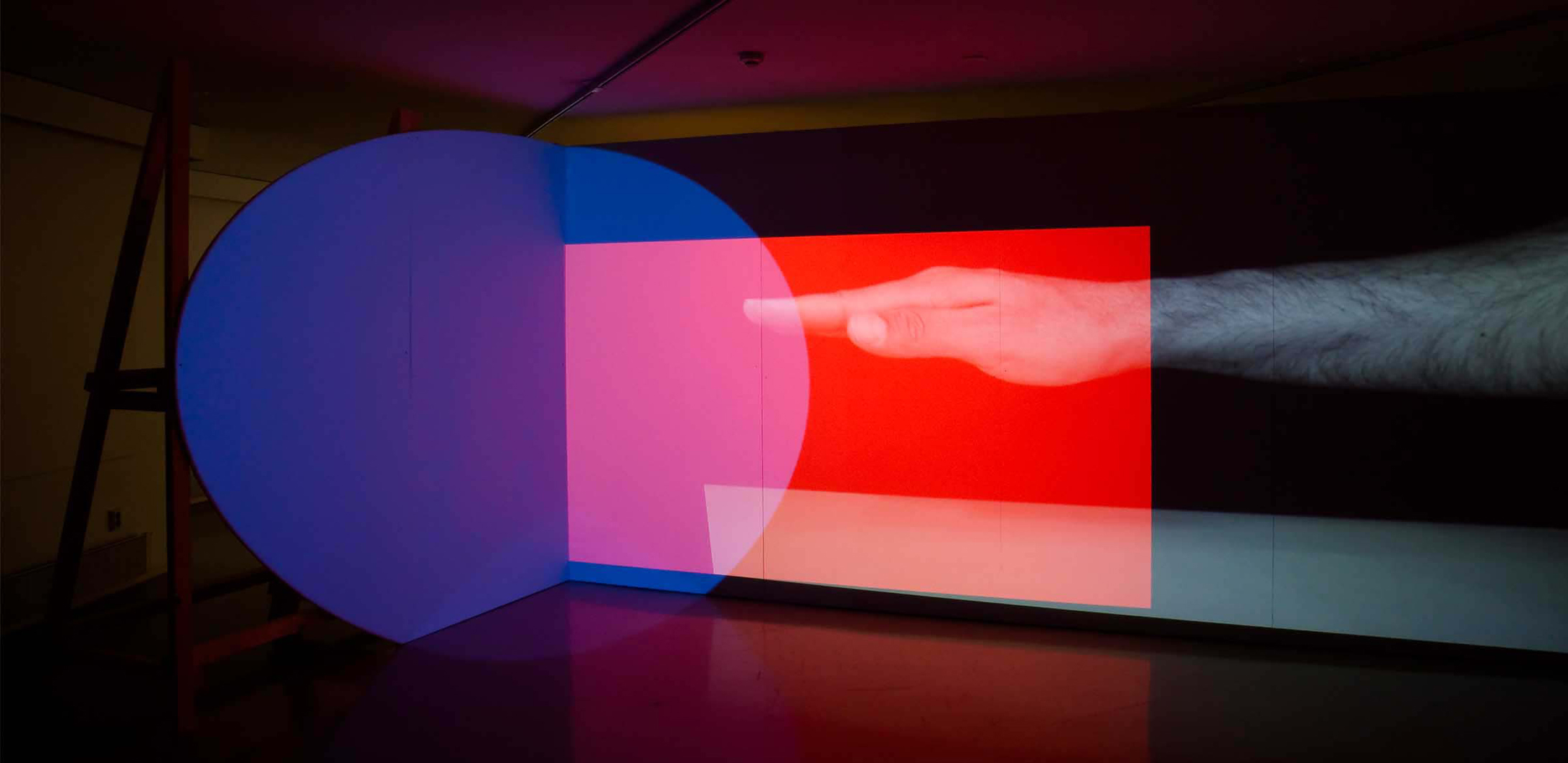
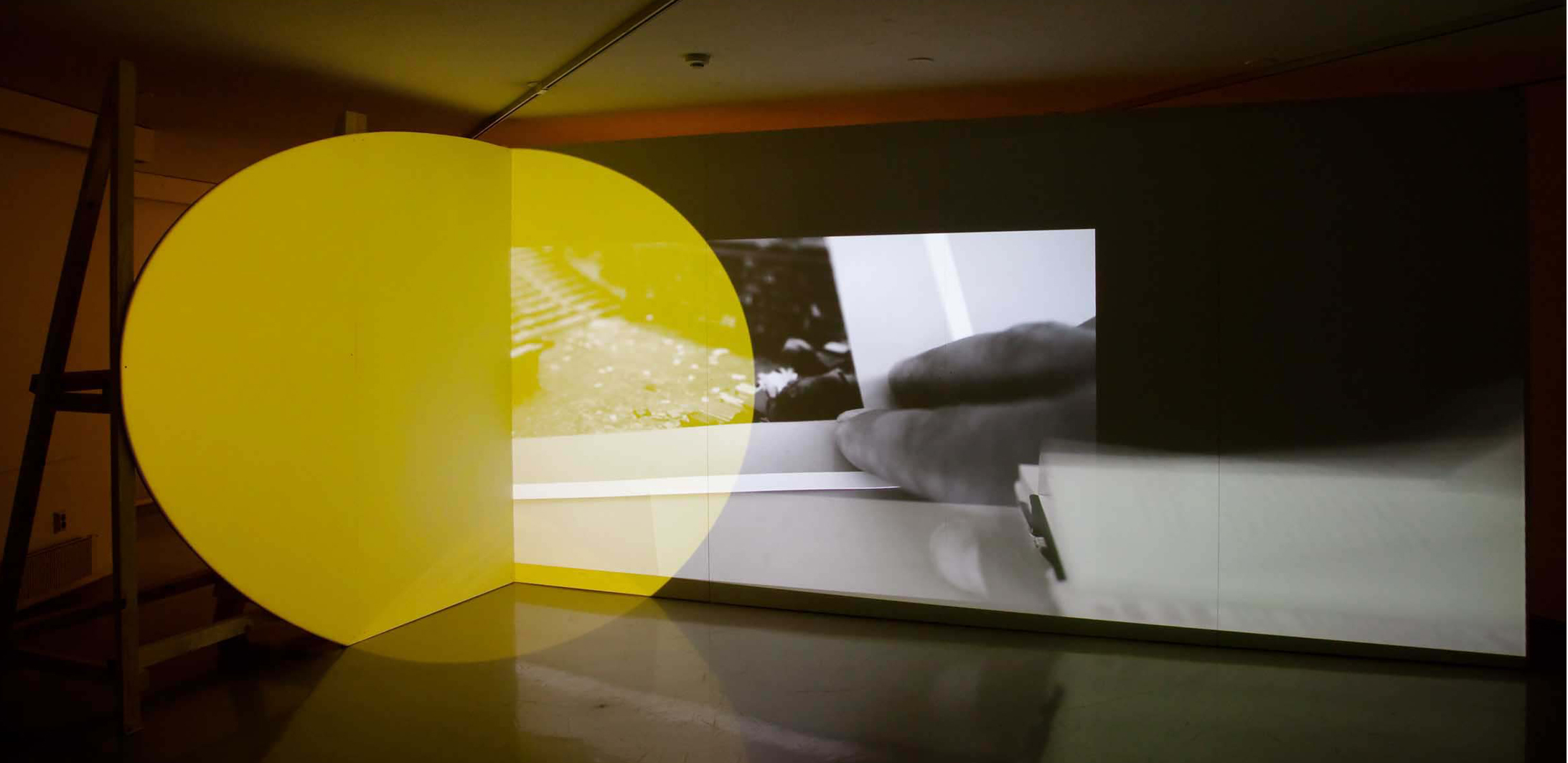
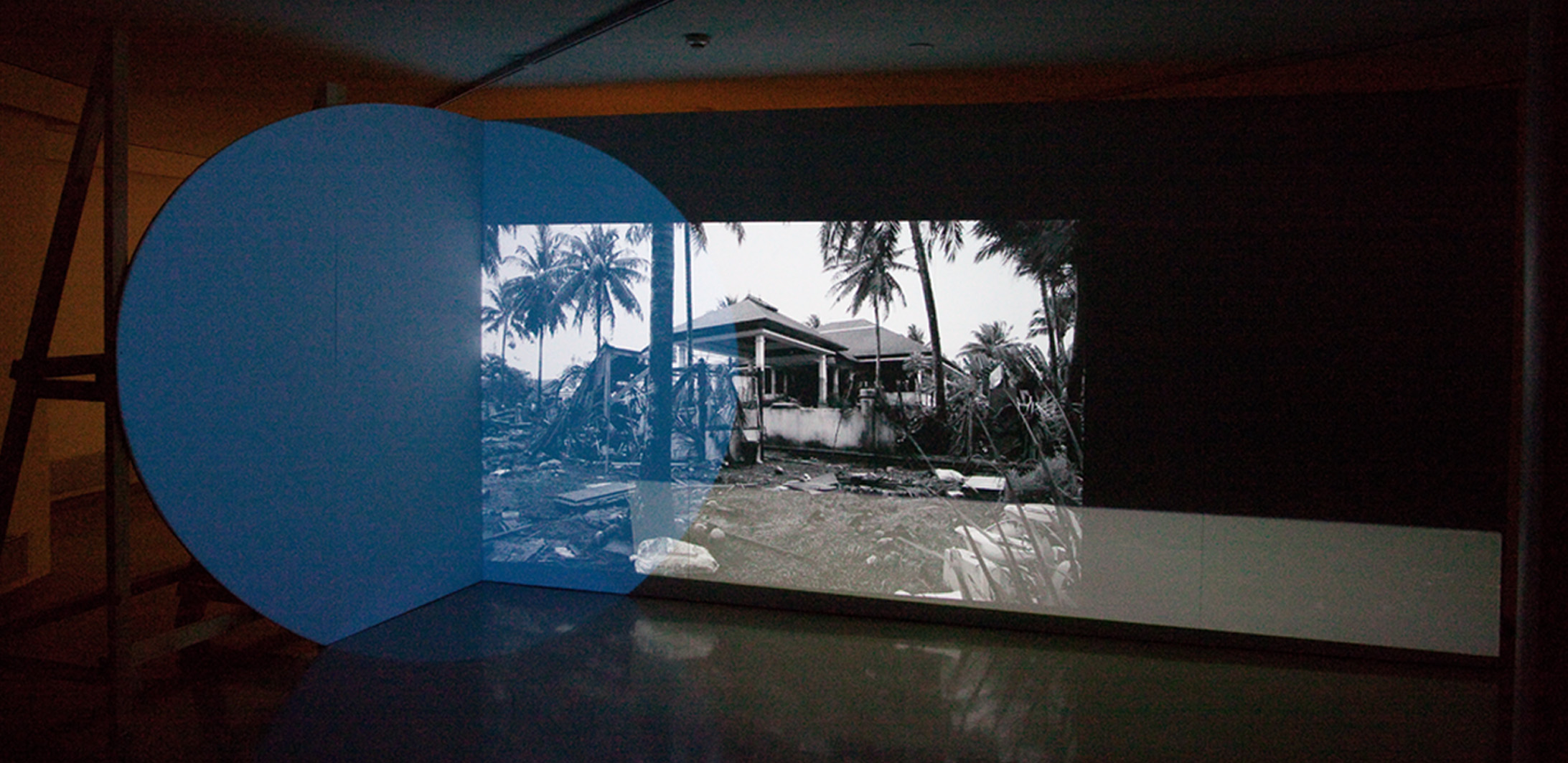
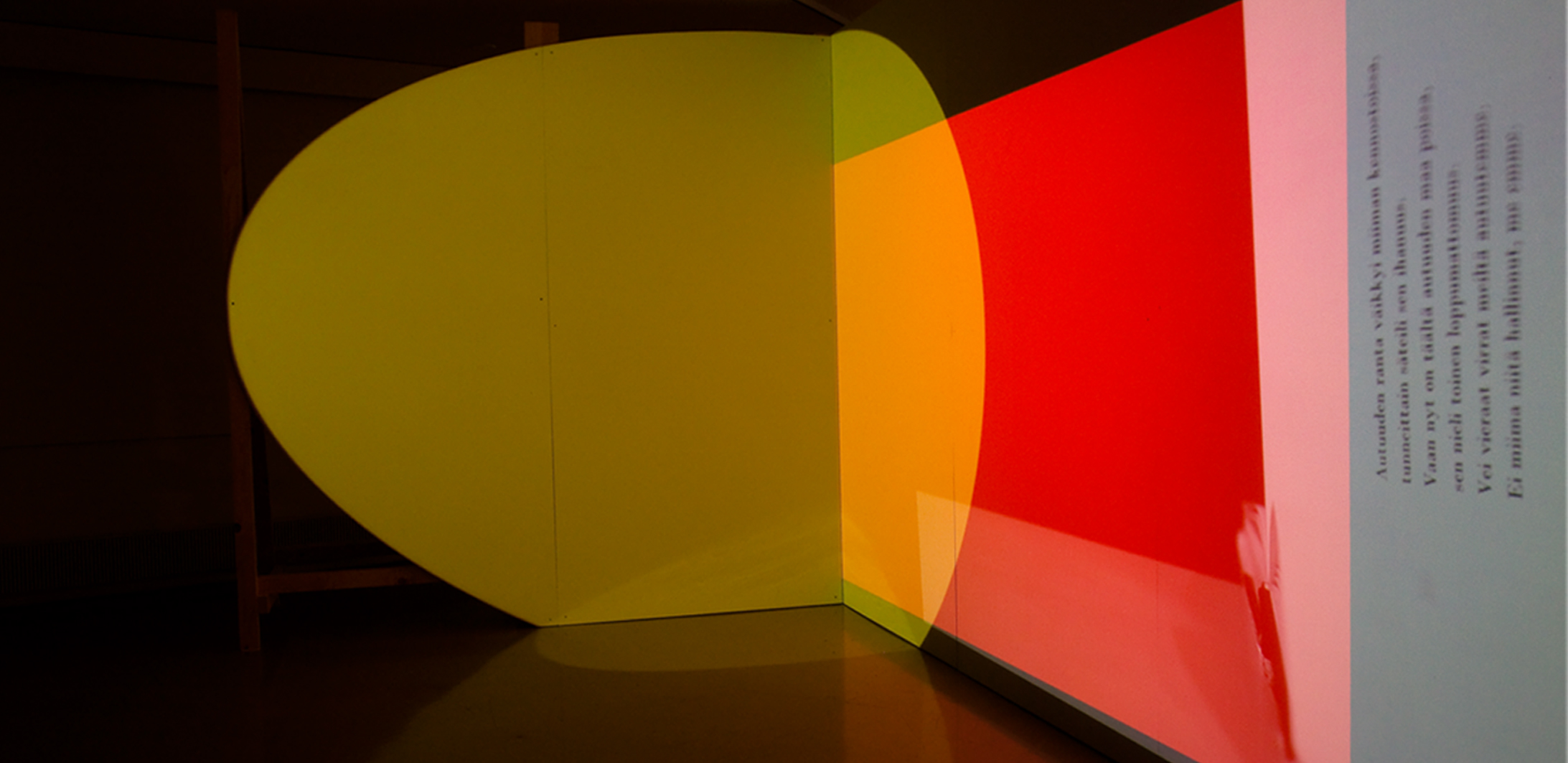
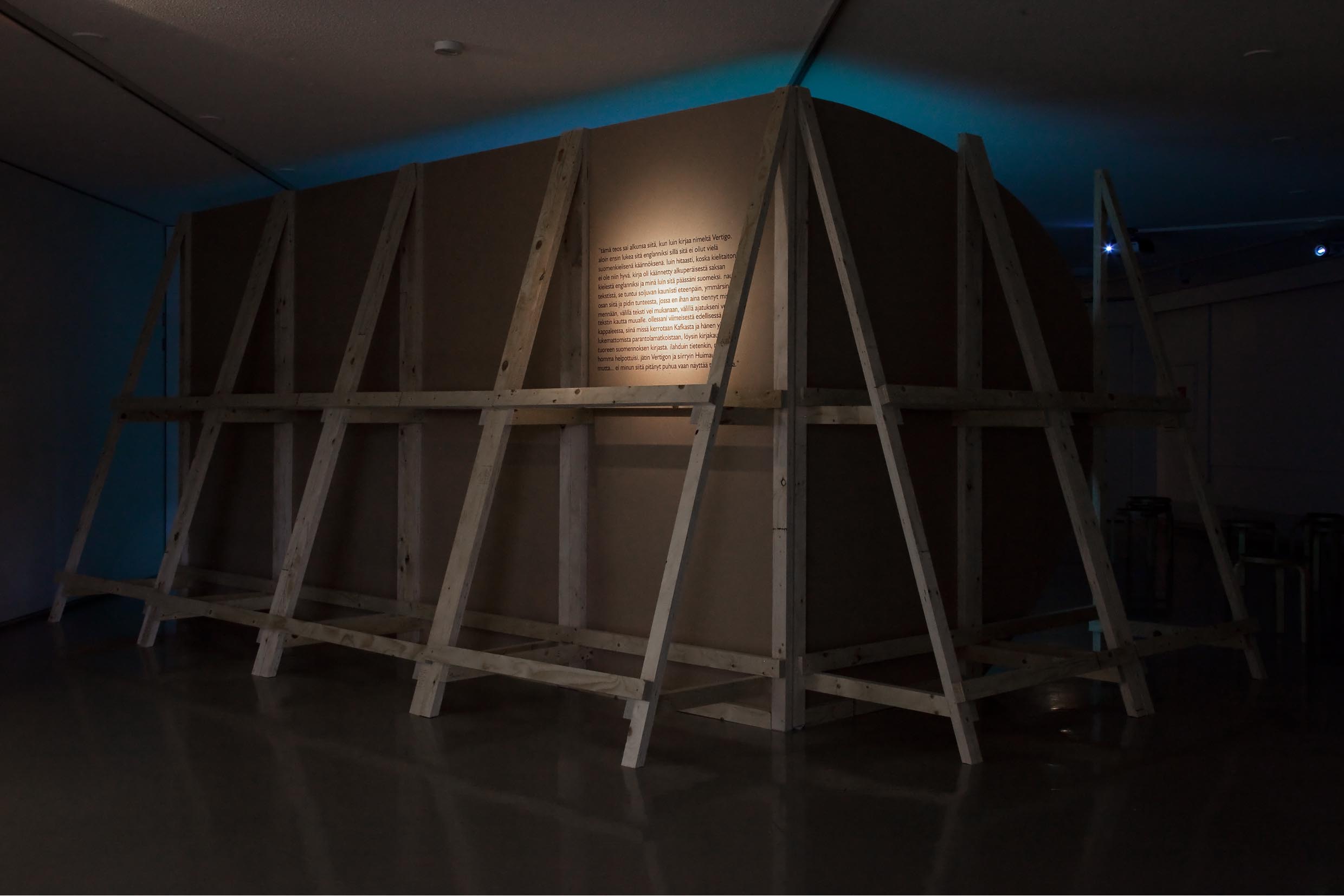 Back side with text
Back side with text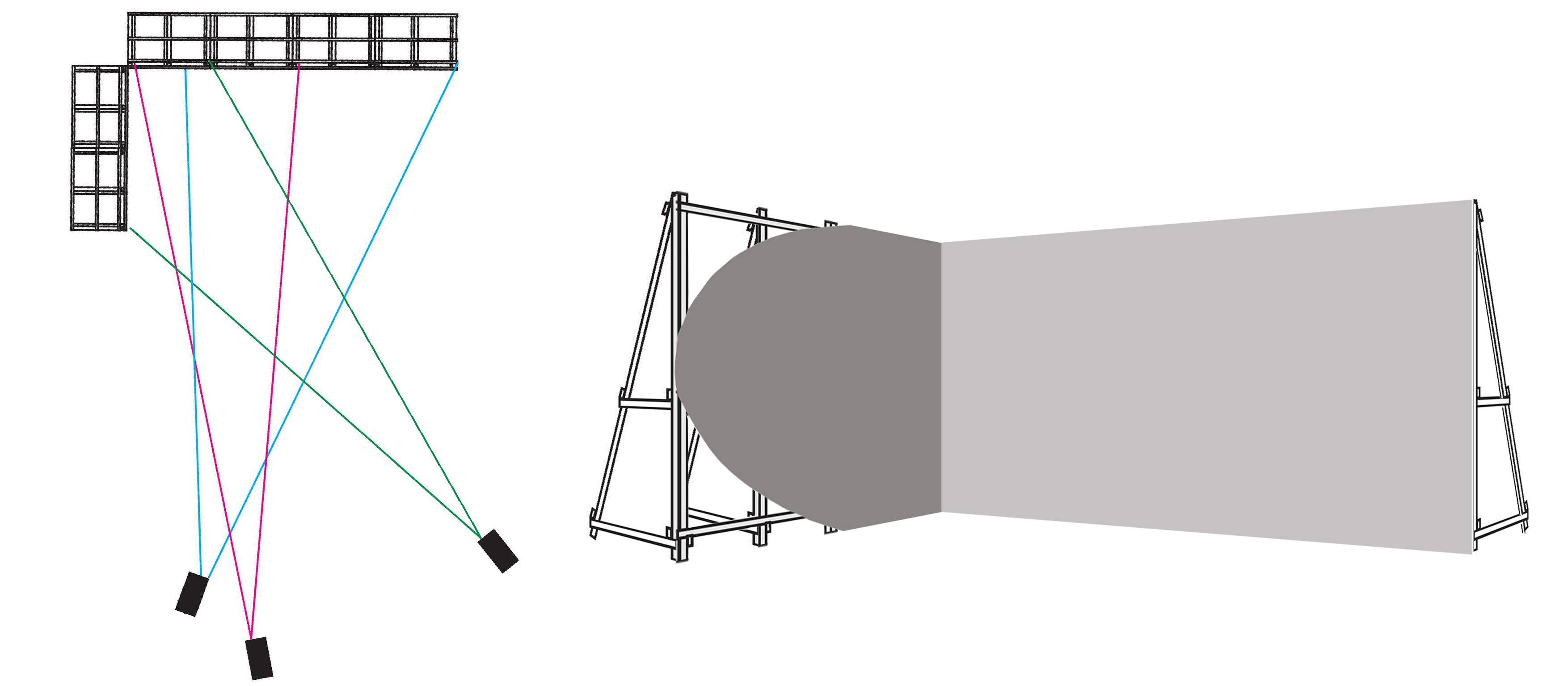
Three legs, 2011
Vesa-Pekka Rannikko’s new video installation Three Legs is on show in the Gallery at the Alvar Aalto Museum. The work centres around the museum building itself and the relationship between architecture and the human body.By playing with scale, Kolme jalkaa examines people’s encounters with their environment as historical, pictorial and material experiences. The travelogue within the work transports the visitor from Viipuri (Vyborg) Library during the War to a photo-shoot for a science-fiction novel. Eventually, through a series of mock-up structures, the visitor ends up in the ruined hotels destroyed by the Thailand tsunami and the microcosmos of the insect world. The narrative is no longer purely linear but also on-screen, at one and the same time.Three Legs consist of three overlapping projections on freestanding wall, voice-over narrative and text written on backside of projection wall.text on the wall:This work originated while I was reading a book called Vertigo. I started it in English, because it hadn't yet been translated into Finnish. I read it slowly, because my English isn't all that good. The book had been translated from the original German into English, and I was now reading it in Finnish in my head. I enjoyed the text. It seemed to have a beautiful flow to it. I only understood some of it and I enjoyed the feeling, although I wasn't always sure where it was going. Sometimes the text would lead me on, and sometimes my thoughts would stray elsewhere – through the text. When I reached the penultimate chapter, describing Kafka on one of his innumerable sanatorium visits, I found a new Finnish translation in a bookstore. Of course it made me happy. Things would now be easier. I left one Vertigo and went on to another one, but…I wasn't supposed to talk about that, but to show this picture instead. Voice over:This picture shows the city library of Viipuri during the Second World War. Its main room appears to have remained intact with people looking for books there.The man with his back to the camera is the Swedish author Harry Martinson, who served as a volunteer in the Finnish-Soviet Winter War of 1939 –1940.In his war-time diary, Martinson described how soldiers forced their way into the library building looking for suitable reading matter, which they crammed into their bags and inside their uniforms. Martinson's best-known work is Aniara, a cycle of poems describing a group of people from the Earth that are doomed to journey eternally through space, accompanied by Mima, a device that can create mental images and pictures of anything at all – and thus offer its users a place of refuge.Martinson was awarded the Nobel Prize in Literature in the 1970s, although he was himself involved in choosing the recipient, which may be why he disappeared from literary circles soon after the prize.I traced Martinson's route from Sweden to Thailand, where he stayed among the local Swedish community. He survived the tsunami of 2006 at Khao Lak and remained in the area.I walked along the beach at Kuak Kai, where a movie was being shot. I came across a whole hotel staged to look like it was destroyed. For a while, I watched the set being built before continuing. I was stopped by a downpour and sat under an awning to wait for it to stop. On the terrace of a bar opposite me a man appeared for a moment, looking like a picture of Martinson that I had seen.Later, I followed the beach further and a found a destroyed hotel that had been taken over by the jungle.There were hordes of red and black beetles climbing in a bush among the ruins. They were everywhere, coming out of the wall seams, and the spaces between windows were full of their remains.Three legs are impossible.Insects have six, two times three.People have two,Dogs have four,Spiders eightand so on, all the way to centipedes..But always in even numbers.Two hands, two legs, two eyes, two ears – one mouth, one nose
